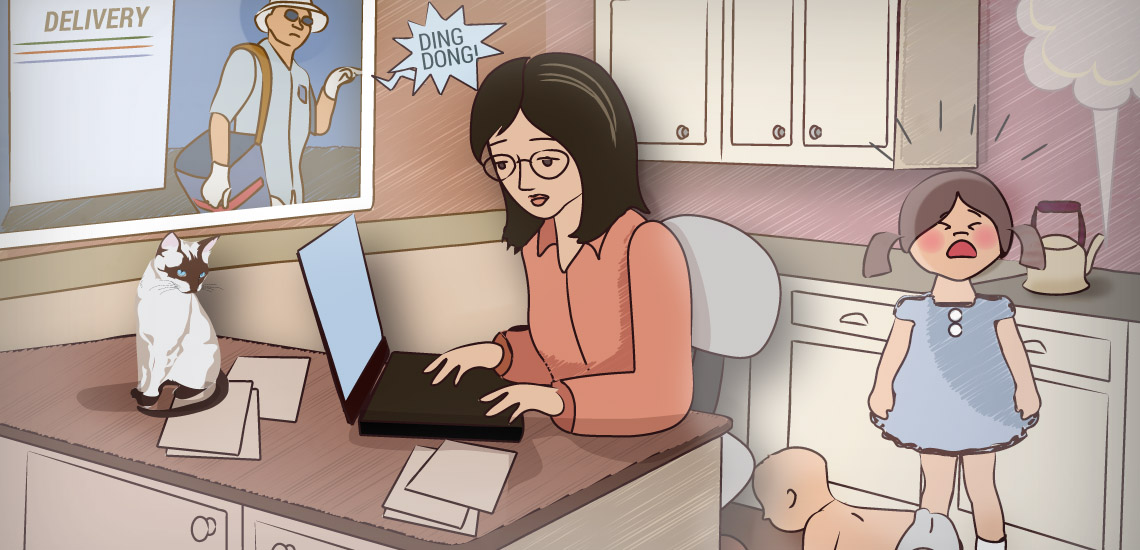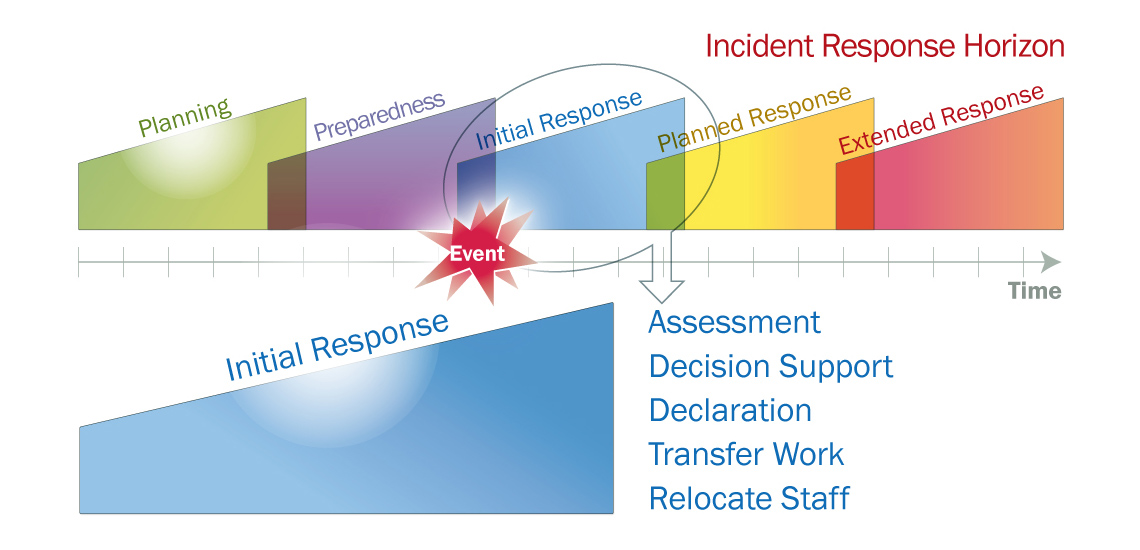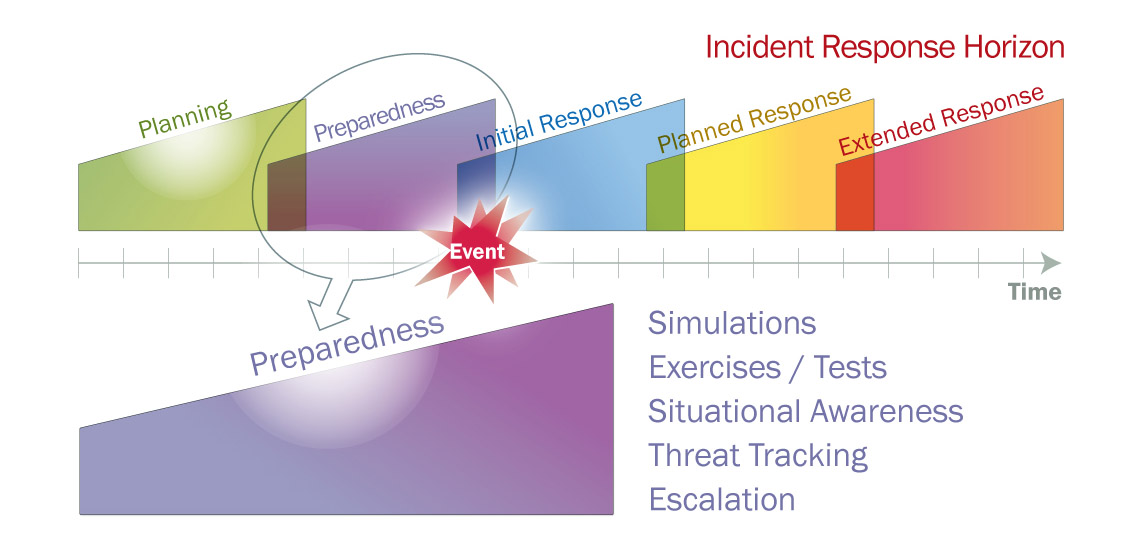Author: Jim Mitchell
A frequent speaker at Business Continuity conferences, many of Jim Mitchell’s blogs can be found elsewhere on eBRP’s website and has published articles in DRJ, Continuity Insights and Continuity Central. Jim has more than 20 years of experience in Business Continuity; if you don’t agree with his opinions – he won’t be surprised.
When contemplating Business Continuity strategies, one of the foremost scenarios to consider is (and should be): what if the building is not accessible? Twenty years ago the only viable answer would have been to transfer people to an unaffected building (or to a predetermined 3rd party ‘work space’). Ten years…
Initial Response – Putting Preparedness into Action
Every organization faces risks – and some of those risks may result in disruptions or other ‘incidents’. An effective response to an incident requires many things. We’ve combined them into a 5-part “Incident Horizon”: Planning, Preparedness, Initial Response, Planned Response and Extended Response. In this blog we look at the…
Planning is Good – Preparedness is Essential
Every organization faces risks – and some of those risks may result in disruptions or other ‘incidents’. An effective response to an incident requires many things. We’ve combined them into a 5-part “Incident Horizon”: Planning, Preparedness, Initial Response, Planned Response and Extended Response. In this blog we look at the…
5 Reasons your C-Suite Might Not be your Best Incident Management Team
As we’ve written about in an earlier blog, the Business Continuity industry still tends to confuse Incident Management and Crisis Management. To stave off argument, let’s agree on this: Incident Managers handle the response to and recovery from a disaster or business disruption. Crisis Managers work to minimize the negative…
Planning – the Launch Pad for Incident Readiness
Every organization faces risks – and some of those risks may result in disruptions or other ‘incidents’. An effective response to an incident requires many things. We’ve combined them into a 5-part “Incident Horizon”: Planning, Preparedness, Initial Response, Planned Response and Extended Response. In this blog we look at the…
5 Requirements for Establishing an EOC
Making certain your organization is “Incident Ready” requires a great deal of planning, testing and exercising. Readiness also requires a qualified and practiced Team to manage your organization’s response to a disruption or disaster. If you have done all that work, you may have planned for where your Incident Management…
Business Continuity Planning: One Size does Not Fit All
Perhaps we’d like to think that Business Continuity ‘standards’ is all that we need to assure our organization is prepared to meet whatever fate and mother nature throw its way. That’s a nice thought – but not very realistic. There are as a many variations in what organizations require as…
Business Continuity Never takes a Holiday
When holidays roll around, or summer shines on the horizon, it is human nature to slack off a bit – as your mind begins its own slow descent into holiday mode. Unfortunately, Business Continuity never takes a day off. Business Continuity Plans are dependent upon people – those critical team…
Global Enterprise Solutions
If you’ve only held one Business Continuity job, you may not be aware that one size does not fit all. Things can be accomplished much more quickly in smaller organizations. The larger the organization, the more complex it, and its BCM needs, are likely to be. Speed, culture and complexity…
You Need an Automated Notification Tool (You Really Do!)
Before there were automobiles, people traveled only a few miles from their homes – because travel by horse, or on foot, was slow. For centuries, that limited horizon satisfied most people’s needs. With the advent of the bicycle, followed by the internal combustion engine, individuals could travel further and faster…










